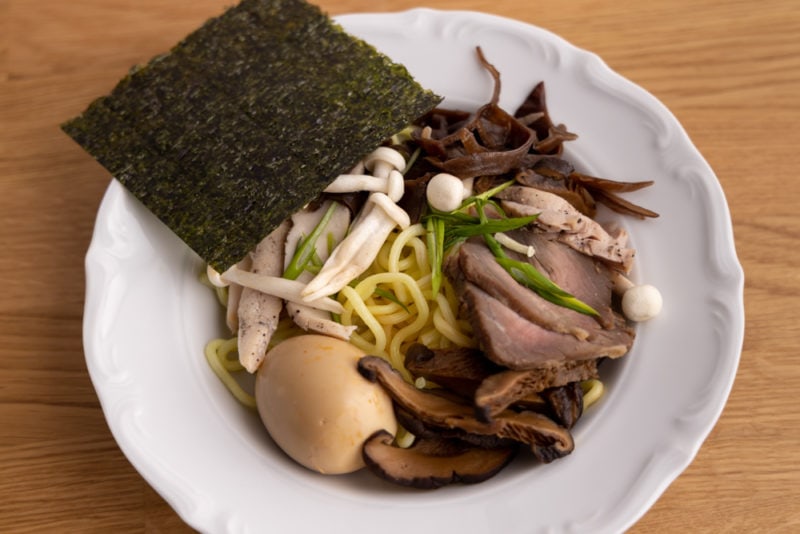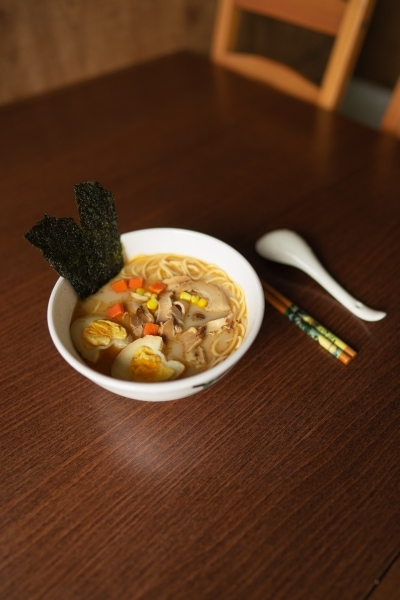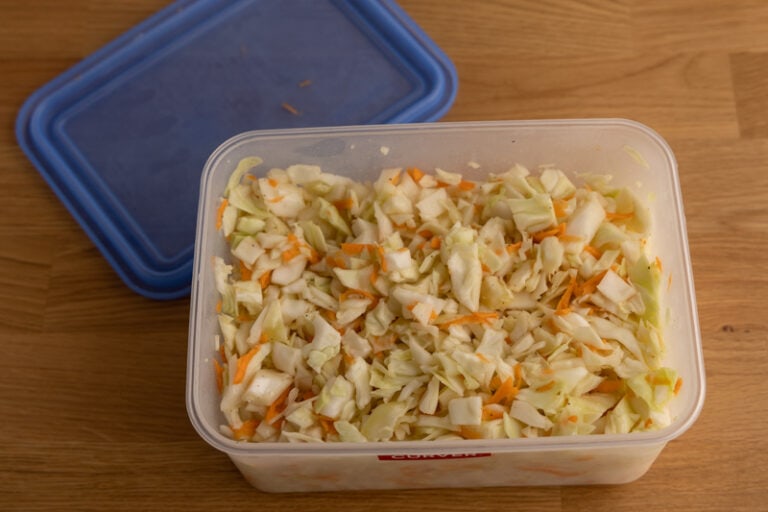Do Ramen Noodles Go Bad?
You’re starting your journey with ramen. Maybe you tried it a few times in a ramen shop or heard your friends saying how good it is. So, for starters, you decided to buy some noodles. Do ramen noodles go bad?
Or maybe you don’t consider yourself much of a cook, and just bought a few packs of instant ramen noodles. And after a few months, some of them still sit in the pantry. And now you’re wondering how long do they last and if you still can use them.
Or you decided to level up your game and bought some fresh wheat noodles to prepare a chicken or beef ramen for a weekend dinner. And now you’re not quite sure if the fresh noodles should be refrigerated or not. Or if, due to their short shelf life, you can freeze the unused noodles.
Either way, if you would like to learn a thing or two about ramen noodles, read on. In this article, we talk about storage, shelf life, and going bad of ramen noodles. We cover instant, dried, and fresh noodles, so no matter which variety you’ve chosen, we got you covered.

How to Store Ramen Noodles
There are basically three options of ramen noodles available. There are the dried instant noodles, usually sold in the block form. Then there are wheat noodles that resemble thick spaghetti. And last, the fresh ramen noodles that are used most often in ramen shops.
Please note that some purists say that dried instant noodles have nothing to do with ramen, except maybe the label has the word “ramen” on it. But for the sake of this article, let’s say that dried instant noodles are also ramen noodles. Now let’s talk about storage.
Dried instant noodles don’t really need much in terms of storage conditions. Let the packs sit in a dark and dry place at room temperature, and you’re golden. While in almost all cases you use the whole block of dried noodles, you can separate it into smaller ones if needed. And to store the rest just chuck it into a resealable bag or airtight container and put back where it was before.

When it comes to wheat noodles, storage guidelines are not much different. Choose a cool and dry place, away from sunlight and heat sources. The pantry or a cabinet in the kitchen will do just fine.
Once you open the package, seal it tightly if possible, or transfer to an airtight container or a freezer bag. It’s pretty much the same way we go about storing dry pasta.
Last but not least, there are fresh noodles. When you go for this variety, you should refrigerate the noodles as soon as you bring them home. If you’re not sure if yours are fresh or not, if they were in the refrigerated section, they are the fresh ones.
If you don’t use all of them at once, make sure the rest is sealed tightly in the fridge. Again, freezer bags are super useful here. And since fresh noodles don’t last that long, freezing them makes perfect sense.
As it turns out, fresh noodles freeze really well. Freeze them in the original package if unopened, or use a freezer bag or double-wrap the package with aluminum foil if opened. Thaw the noodles in the fridge overnight.

How Long Do Ramen Noodles Last
Once again, let’s start with instant dry noodles. They usually have a shelf life of a few years. The label surely has a best-by date on it, and since these noodles have some preservatives, they easily can last for months past that date.
When it comes to pasta-like wheat noodles, they also come with a date on the label. But since this product isn’t as highly processed as instant noodles, their shelf life is usually around a year, maybe a year and a half. And while the noodles will definitely keep good quality for a few months past that date, they degrade over time, and definitely won’t last forever.
Fresh noodles have definitely the shortest shelf life. They usually keep for about 2 to 3 weeks in the fridge. If you need to store them for longer, freezing is the way to go.
In case you were wondering, you can also freeze instant and wheat noodles, but their shelf life is quite long, so there’s usually no point in doing that.
| Pantry | Fridge | |
|---|---|---|
| Instant ramen noodles | Best-by + 1 year | |
| Wheat ramen noodes | Best-by + 3 – 6 months | |
| Fresh ramen noodles | 2 – 3 weeks |
Please note the periods above are estimates only.

How to Tell if Ramen Noodles Have Gone Bad
So before you prepare the broth, the miso paste (if you use it), and all the food you want to add to the bowl, it makes sense to make sure the noodles are fresh, right?
When it comes to instant dried noodles, as long as moisture didn’t get to the package, they should be just fine.
Open the bag, and take a close look at the block from all sides. Then crush the noodles with your fingers and make sure there’s nothing that shouldn’t be there, like mold, or any bugs. Last, give the noodles a sniff, and if all is okay, it’s safe to eat.

For wheat noodles, the modus operandi is pretty much the same. Make sure the food is dry, there are no bugs in the package, and it doesn’t smell off.
Both instant noodles and their wheat friends don’t often spoil in a way they’re unsafe to eat. Worst that can happen is that the noodles will taste a bit stale after cooking and that’s about it.
Fresh ramen noodles, however, are moist and can actually grow mold if stored for far too long or in suboptimal conditions.
The first thing to do is to look for any signs of mold or dark specs on the noodles. The next thing to do is to give it a good whiff to make sure it smells right. If everything seems right, and you don’t store the fresh noodles for too long (like over a month), they should be perfectly safe to prepare.
Rotten Records: Share Your Snap!
Caught some food past its prime? Upload your photo to “Rotten Records” and help others spot the signs of spoilage. Every image makes our food community safer and more informed!


![How Long Does Lentil Soup Last? [Shelf Life, Storage, Spoilage]](https://www.doesitgobad.com/wp-content/uploads/Lentil-soup-on-ladle-768x512.jpg)
![How Long Does Meatloaf Last? [Storage, Shelf Life, and Spoilage]](https://www.doesitgobad.com/wp-content/uploads/Freshly-baked-meatloaf-768x512.jpg)

![How Long Does Quiche Last? [Storage, Shelf Life, and Spoilage]](https://www.doesitgobad.com/wp-content/uploads/Freshly-baked-quiche-768x512.jpg)